Crockers
Crockers Tring HP23
I had the good fortune to sample the cooking of Master Chef: the Professionals finalist Scott Barnard when he was based at his tiny outpost in Potten End, darkest Hertfordshire. One-horse town would not be an exaggeration, but it was a sound place to start if you happen to have the talent and enterprise to pull in the local, affluent foodie crowd.
Scott had just opened his new venture after a good few years at high-end hotel restaurants the Grove (just outside Watford) and before that the Compleat Angler in Marlow. The first incarnation of his chef’s table affair was pretty much just Scott labouring away at the pass to the baying of said locals and the occasional stray Londoner wondering if taxis picked up this far from civilisation. It was a pretty heroic effort, enlivened by the chef’s keen understanding of flavour combinations and the good-natured, refreshingly unfiltered banter that we had come to expect from his TV appearances. I remember a sweet and fresh beef tartare (a wise, low-intervention move when you’re trying to juggle reductions and pastry cases single-handed), some nice fish cookery, a warm pile of good home-baked bread and a small, thoughtful wine list. Charming, slightly frenetic and waiting to unfurl his wings fully were my lasting impressions.
I hadn’t eaten with him since but am pleased to report that the food at his larger and more lux Crockers in Tring has grown in vision and skill along with its chef. Now supported by some keen-looking acolytes and a couple of delightful front-of-house folk, Scott is able to concentrate on sourcing and saucing to his heart’s content. The arrival of his fine dining concept must have been a breath of fresh air to Tring’s food scene which, with neighbouring Berkhamsted sucking up much of the independent glamour, had previously had a few nice-enough places but nothing more. Now there’s somewhere to go for your micro-herb and tweezer fix.
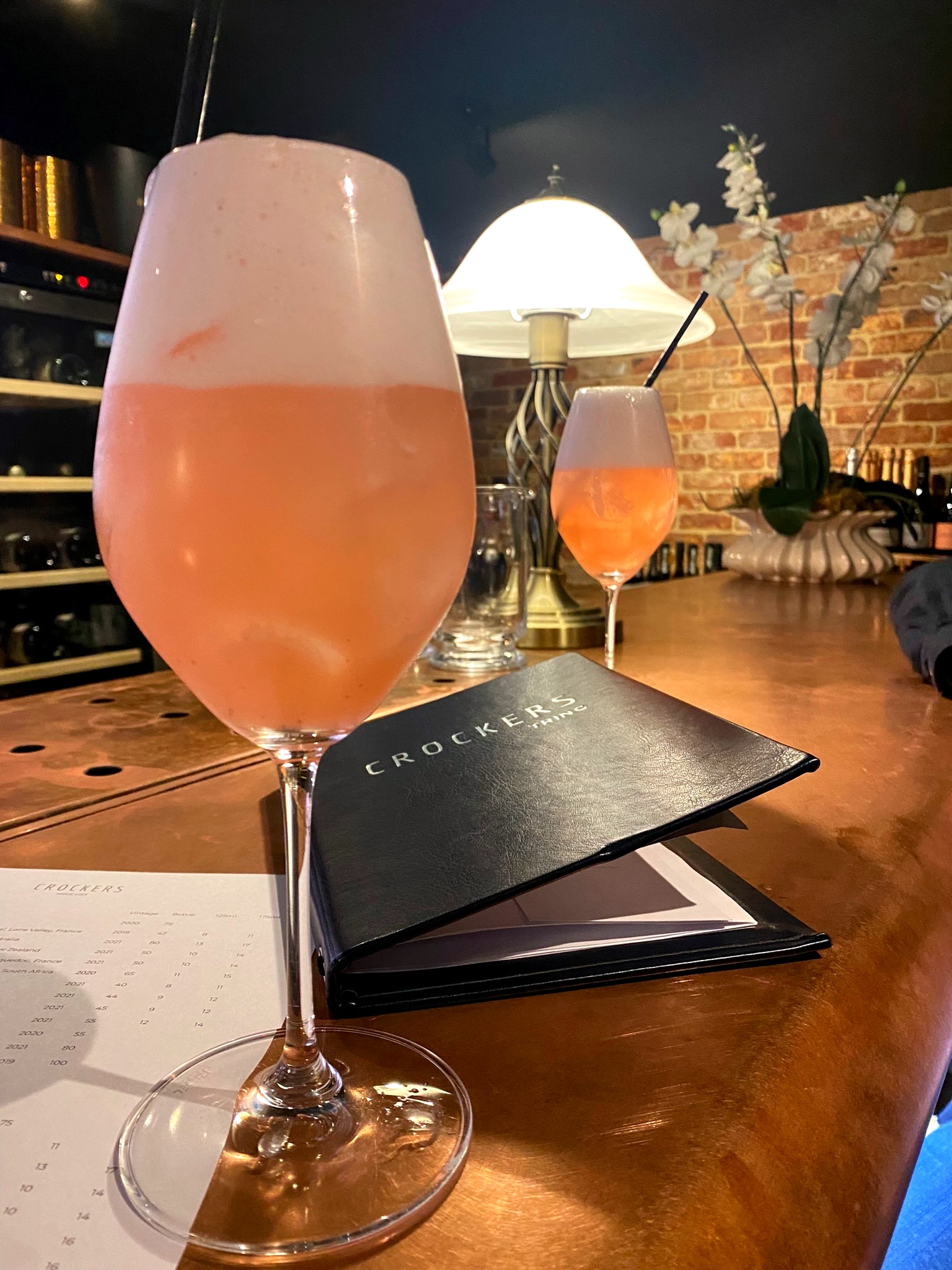
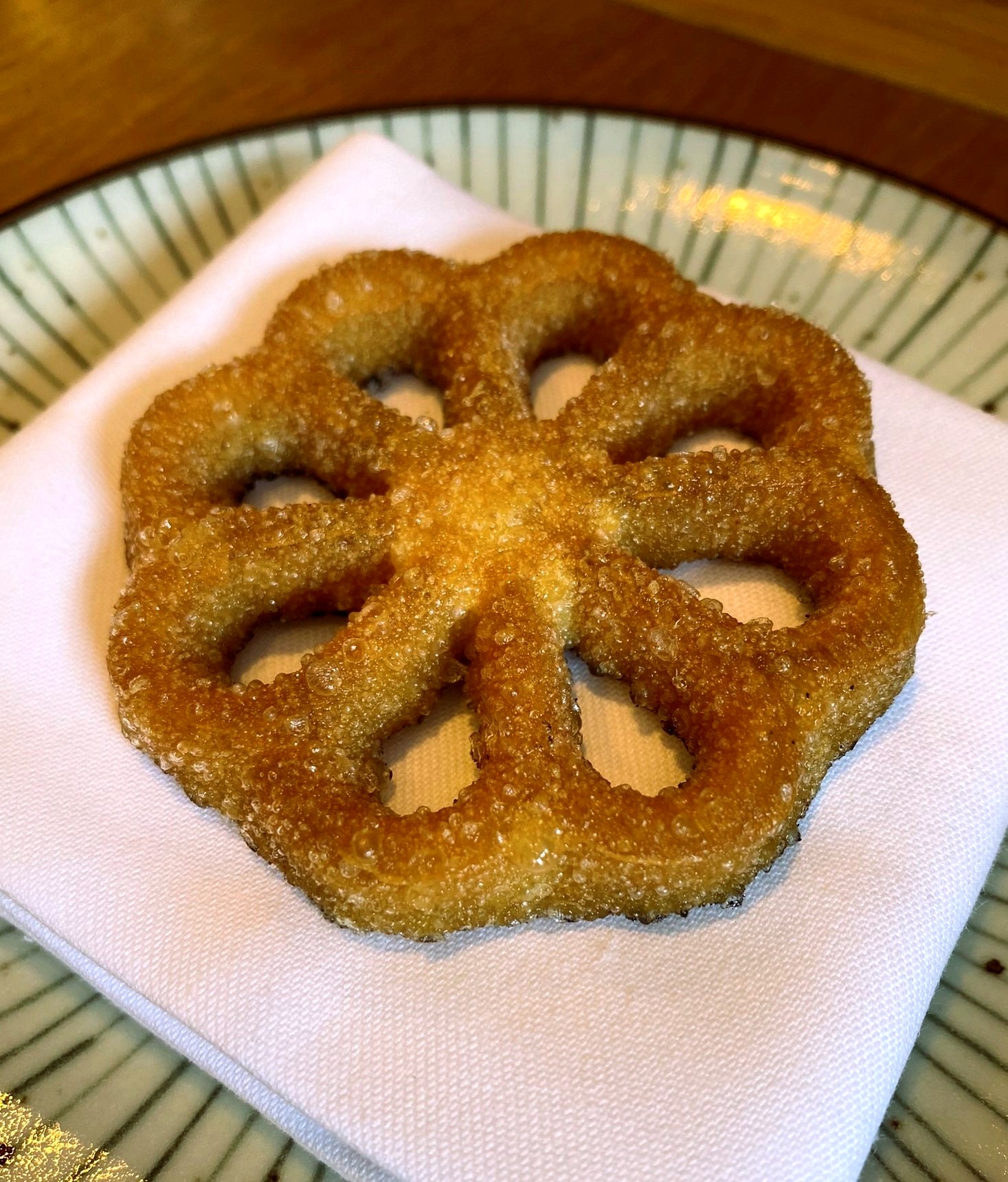
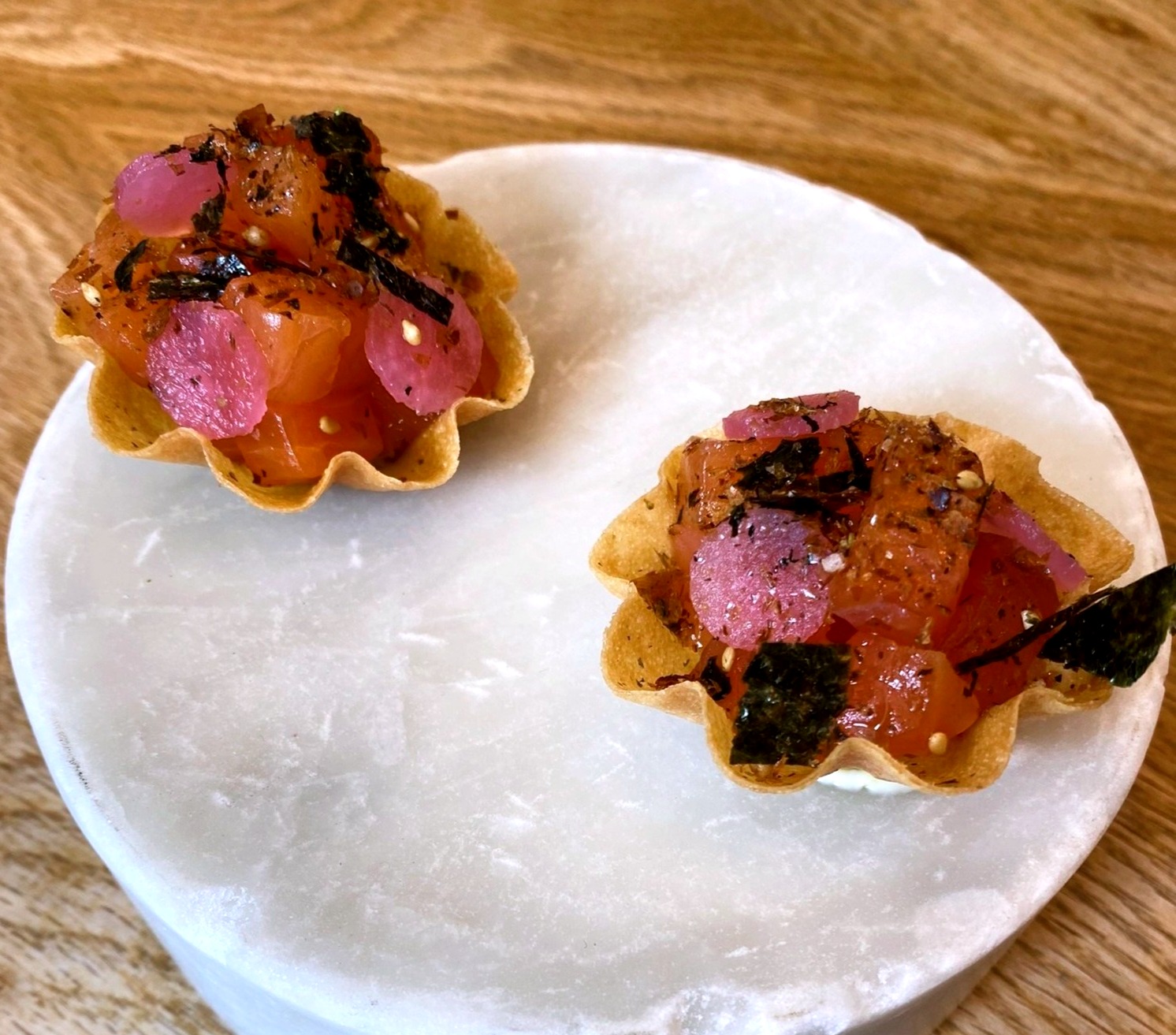
We visited at lunch time during the week when a slightly shorter tasting menu is offered at the pass upstairs. The more traditional dining room downstairs is presumably aimed at those who can’t bear interacting with other diners or with the chef. I do have some sympathy with that, but here the theatre is half the point and it would be shame to forgo the mise en scène of it all. Our louche day-time visit started in the genuinely lovely cocktail bar hidden in the basement where cheery mixologists rustled up a couple of refreshing Rhubarb Gin Fizz cocktails (there’s an equally seasonal blood orange affair on offer too). Then, upstairs and seated at the horseshoe-shaped pass, the food kicked off with a light and crisply fried Westcombe Cheddar roundel that occupied a tasty hinterland somewhere between a croustade and a beignet. Seasoned with malty IP8 beer vinegar and dusted with burnt onion, it managed to be both unctuous and light at the same time. Excellent start. This was followed by a delicate tart case filled with a dice of salmon tartare lifted by yuzu and seasoned with furikake (the Japanese seaweed and spice condiment).
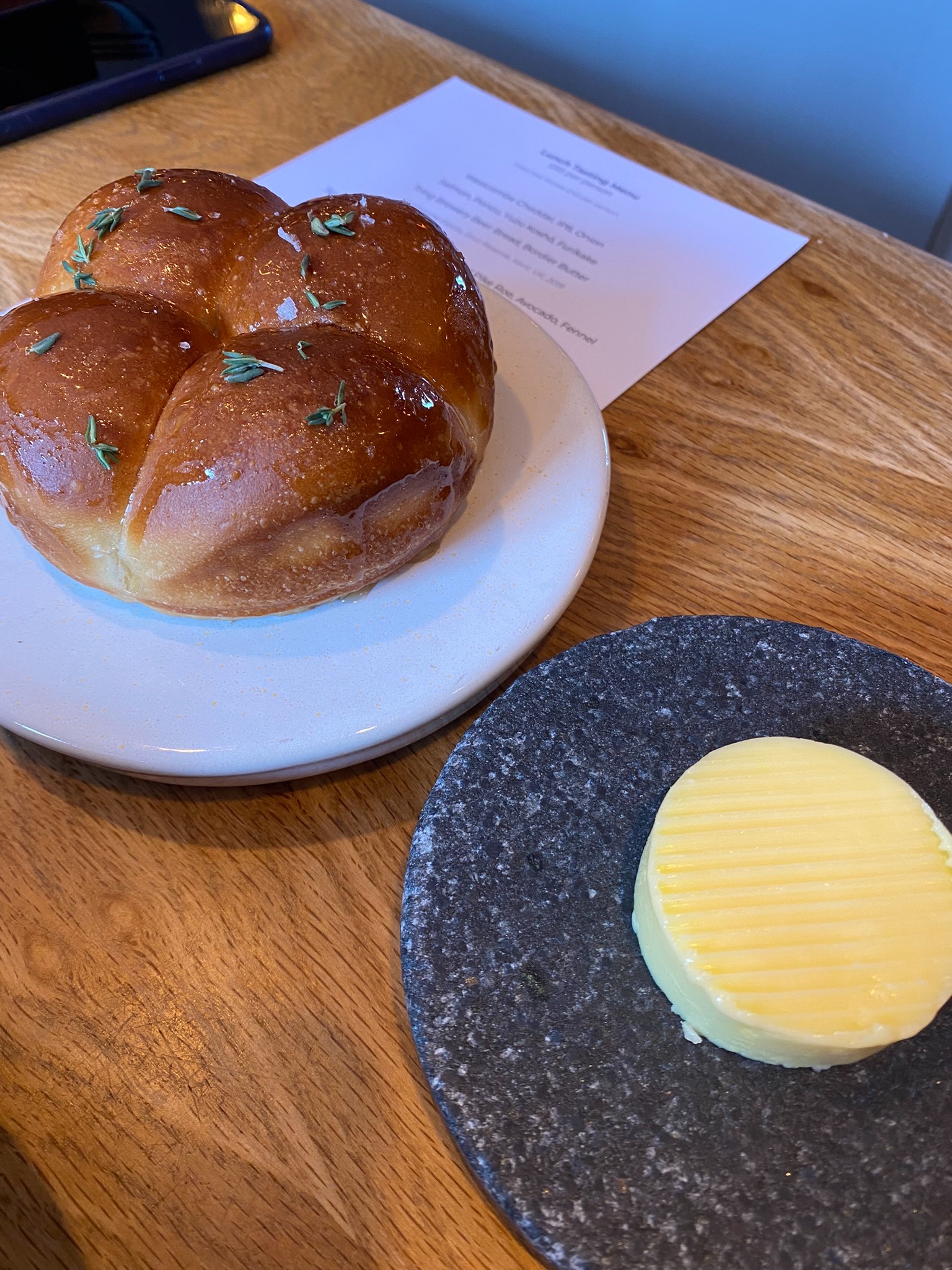
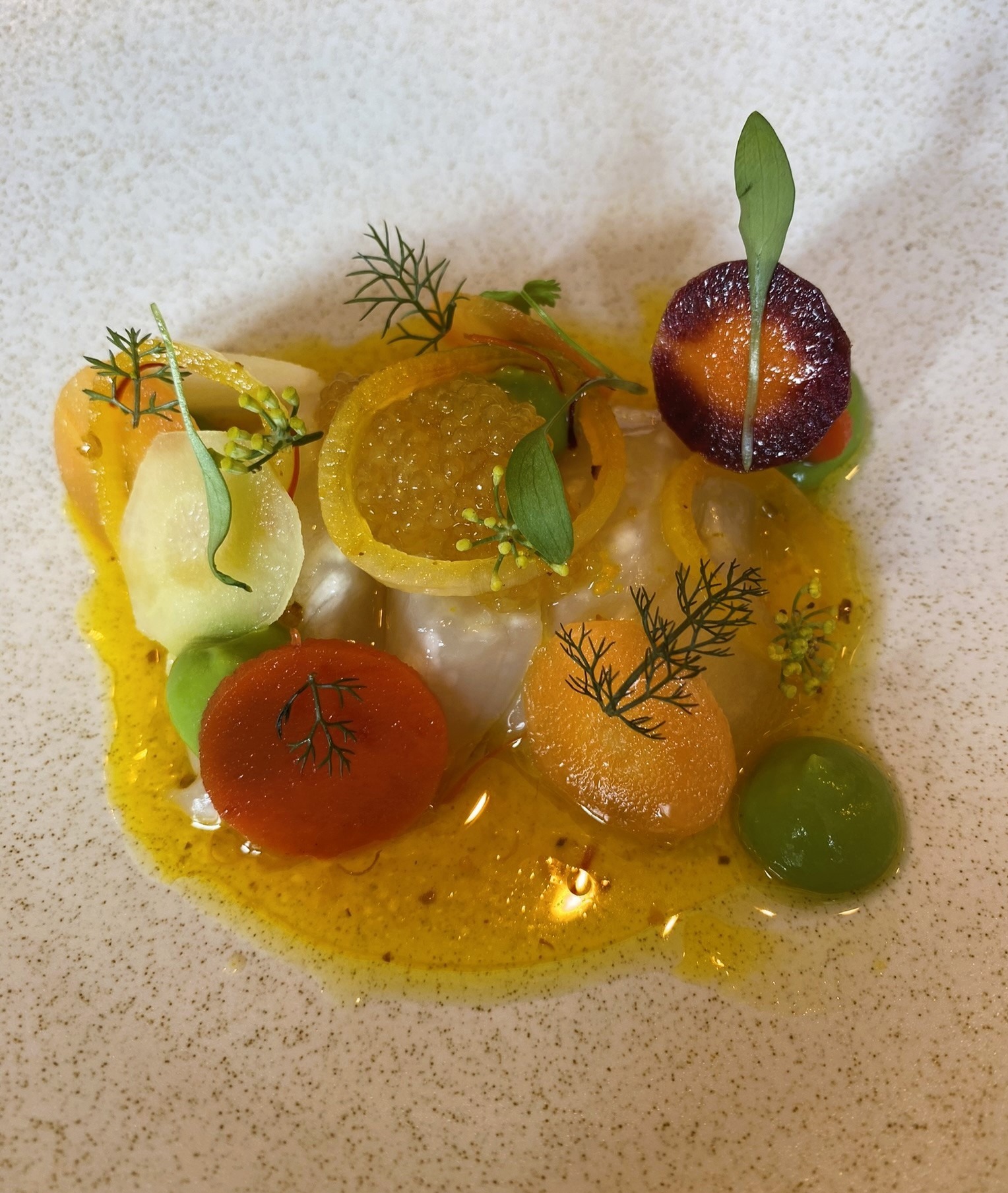
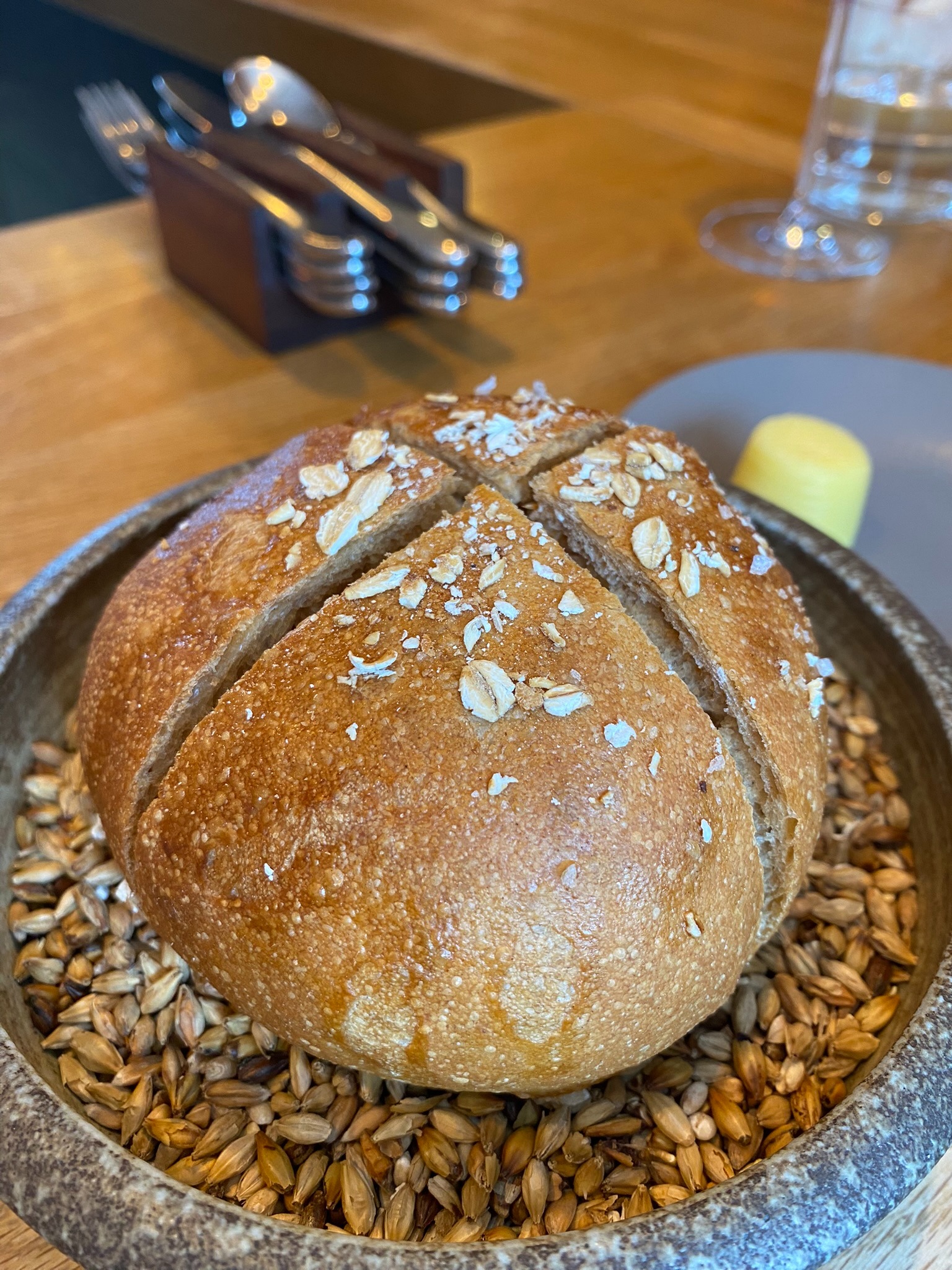
An experience with a dodgy scallop years before precluded me from tasting the citrusy escabeche-inspired fish course, but Scott kindly prepared the fish dish from the extended evening menu for me instead. I certainly didn’t feel deprived - what arrived was a perfectly cooked piece of cod with young asparagus and a classic champagne velouté.
Much to our joy, a plump little loaf of bread appeared still warm from the oven. It had been made with beer from the local Tring brewery and came with a pat of France’s aristocratic Beurre Bordier. They take their butter seriously here: on my first visit I had marmite butter (way before it became commonplace in restaurants of a certain ilk) and the recent Valentine’s menu had apparently featured a delicious-sounding duck fat version. A cultured butter appeared later in the menu too, accompanying a moist and airy brioche glazed sweet with honey and gilded savoury with thyme leaves.

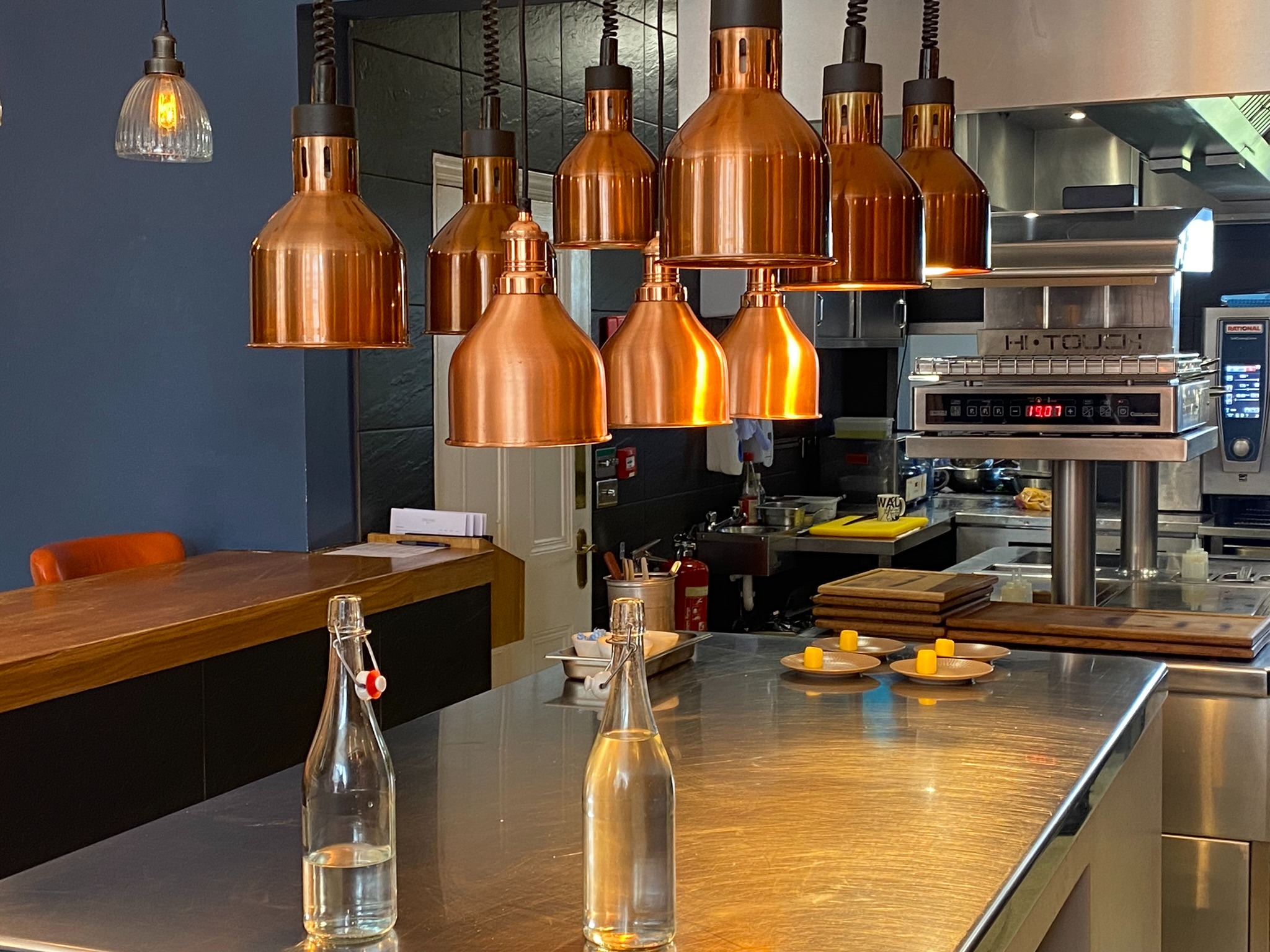
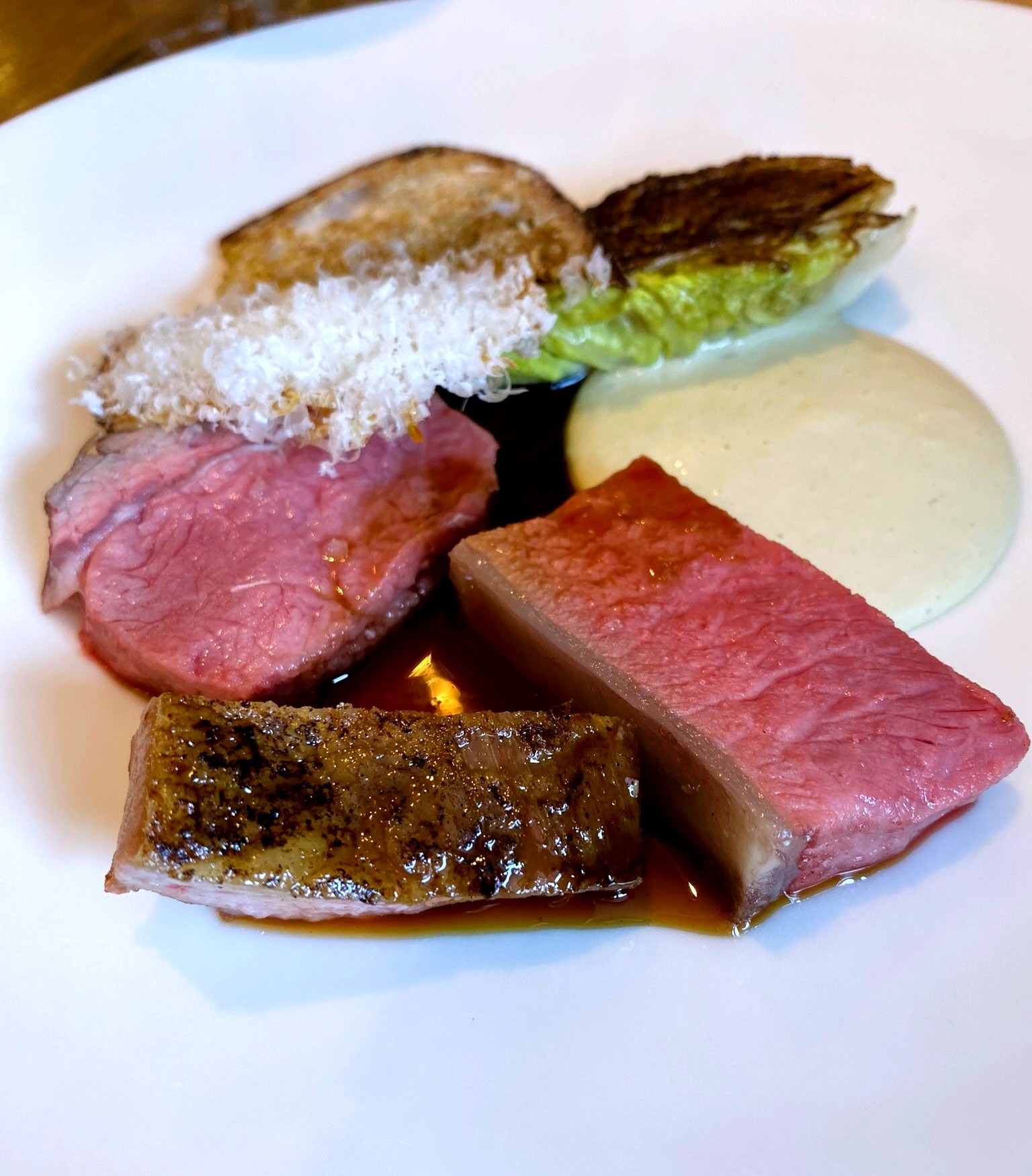
Two of our fellow dinners were enjoying the vegetarian menu which, as far as I could see without craning too obviously, was no afterthought: I saw a lovely fresh pea risotto pass by, garnished with a few cheffy bells and whistles. We were pleased we’d come with our carnivore hats on when the main course arrived, though. It was one of his signature dishes we were told proprietarily. Our suspicion that this was shorthand for “off the tele” was confirmed when the sauce was announced, with a self-deprecating grim, as the one that Marcus Wareing had really enjoyed. It needed no celebrity chef endorsement (not even from someone of Wareing’s stature) as it was a perfectly balanced little sauce with just enough anchovy umami to complement the lamb but not so much as to overwhelm. There was saddle and a little bit of loin I think, all nicely pink and perfectly rested. The other “Caesar” element was seared baby gem lettuce which was so much more delicious than it had a right to be: a proper vegetable rather than a novelty. We went for the suggested wine: an unusually deep-flavoured and nicely oaked St Joseph from one of the area’s quality producers, Domaine Courbis.
The menu then proudly declared an optional cheese course. When its Suffolk favourite Baron Bigod oozing over a crumpet and seasoned with truffle honey and copious truffle shaved fresh at the pass by chef himself, it can hardly be described as an option. The suggested wine pairing here was a Hunter Valley Semillon which can be a tricky customer (and is not a particularly well-known style on European shores). This one was from Tyrrell's however which, true to the style and the quality of the producer, managed to be both citrus fresh and show a bit of complexity from lees ageing. It was a good choice for the cheese, cutting though the fat but holding its own against the earthiness of the plate. We wrapped up with a fine desert: a light, deconstructed vanilla cheesecake showcasing the last of this year’s forced rhubarb. It was fragrant, with nicely judged sweetness. The little plate of sweets that followed might have seemed like overkill had they not been offered with such generosity and included a palate-cleansing, citrus/floral Calamansi jelly.
Much to our joy, a plump little loaf of bread appeared still warm from the oven. It had been made with beer from the local Tring brewery and came with a pat of France’s aristocratic Beurre Bordier. They take their butter seriously here: on my first visit I had marmite butter (way before it became commonplace in restaurants of a certain ilk) and the recent Valentine’s menu had apparently featured a delicious-sounding duck fat version. A cultured butter appeared later in the menu too, accompanying a moist and airy brioche glazed sweet with honey and gilded savoury with thyme leaves.
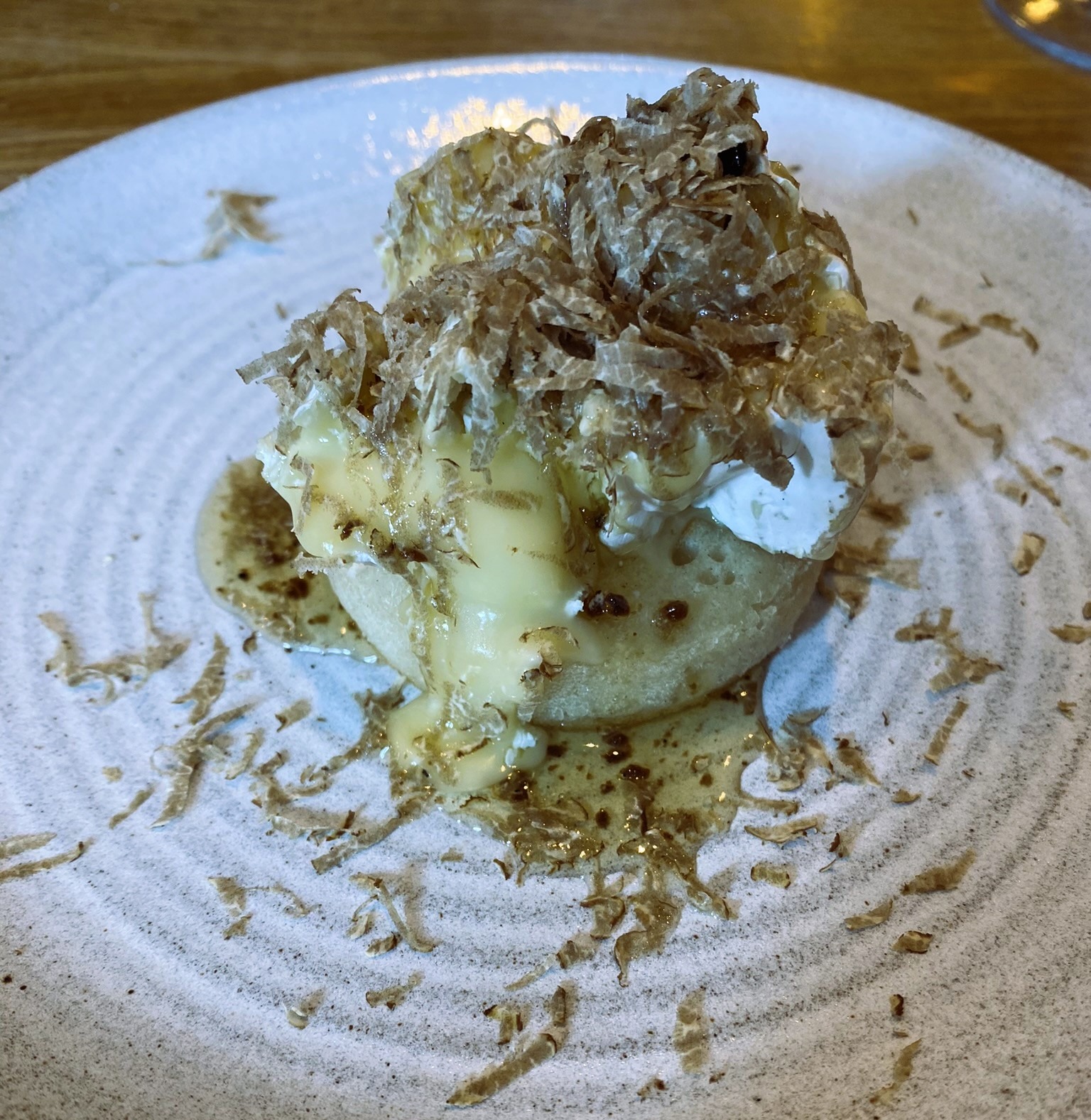
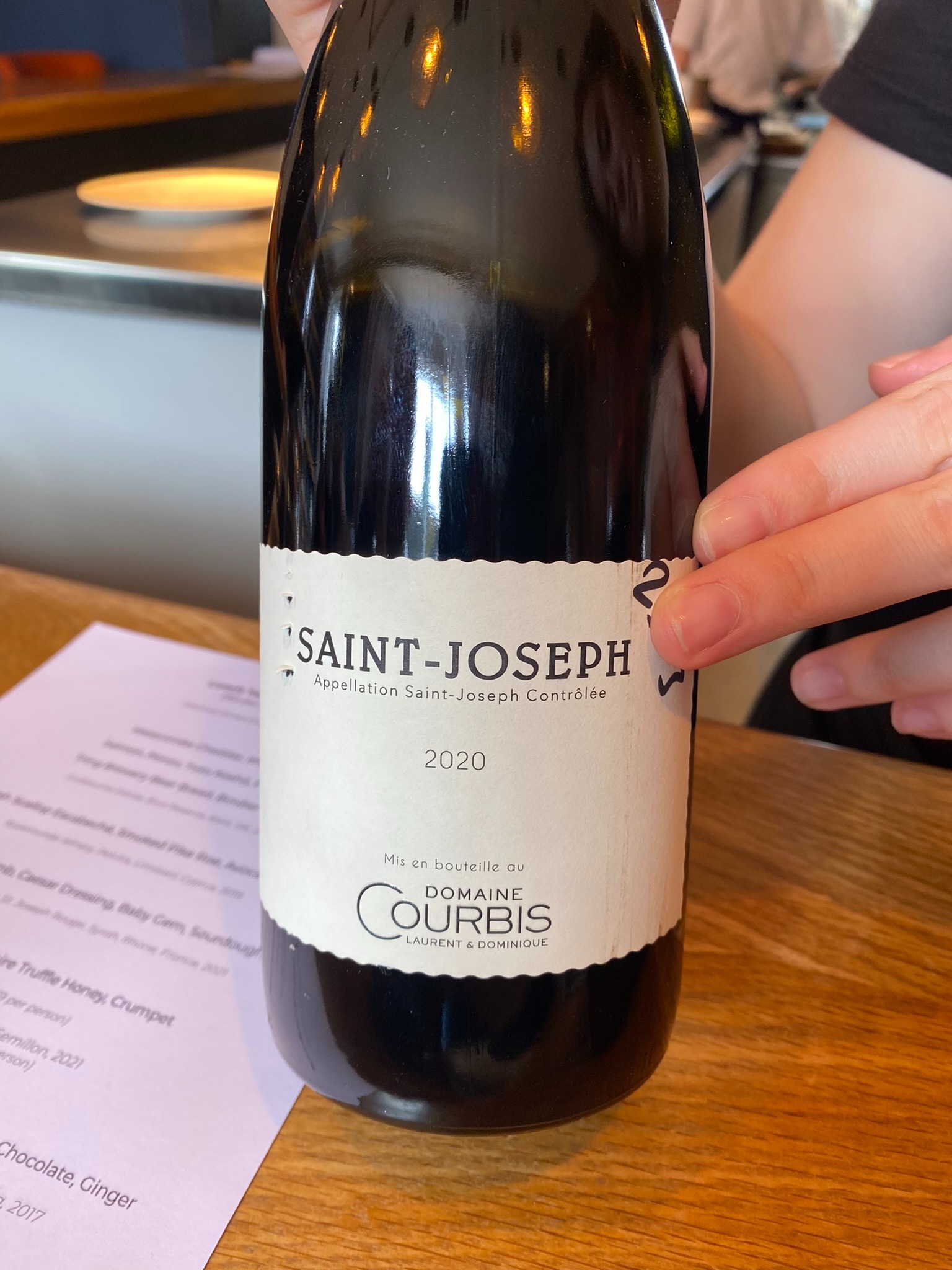
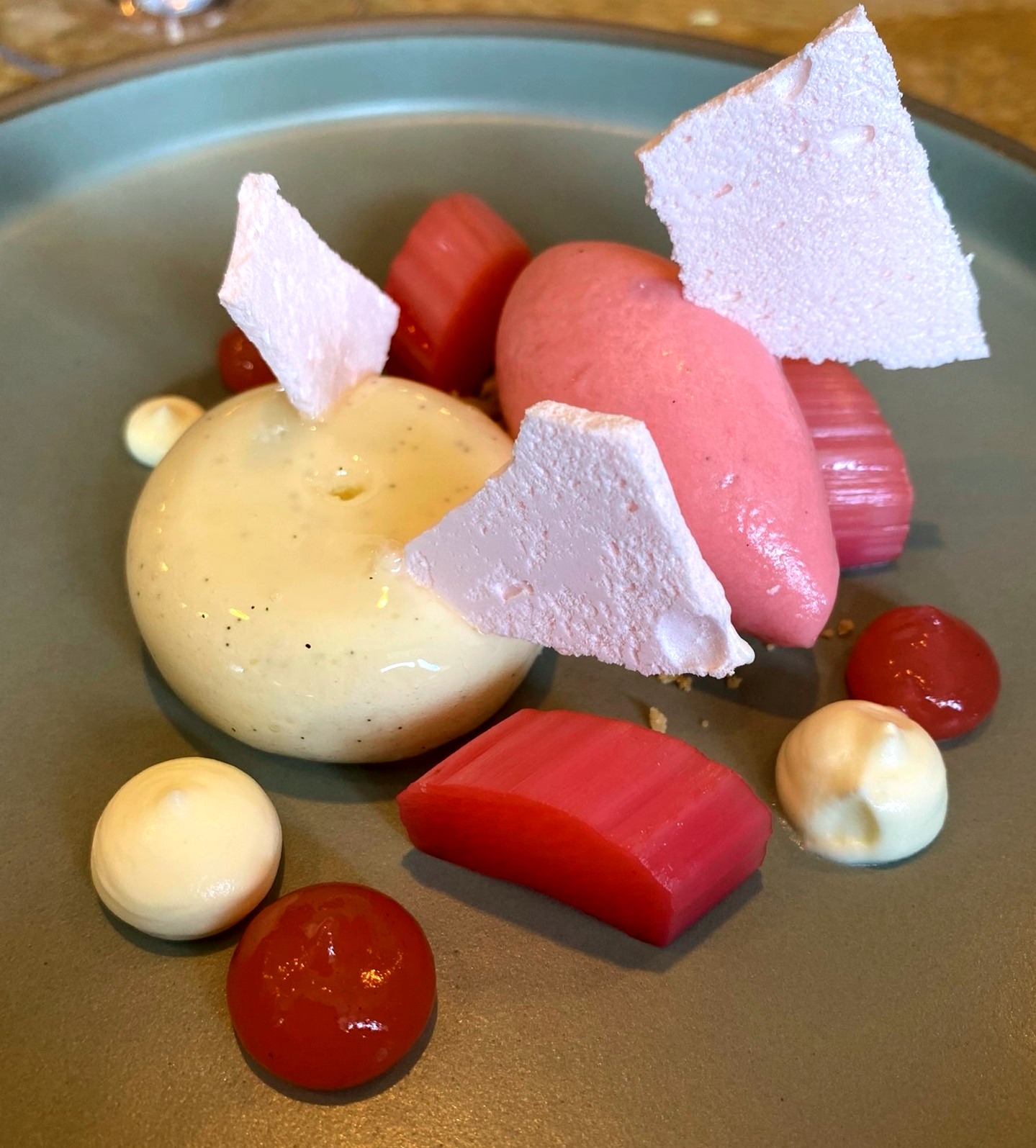
A quick tour through the sensibly sized wine list revealed some nice choices, most of which are available by the glass. Gusbourne rules the modish home-grown fizz and also supplies its most recent innovations - a still Pinot Noir and Chardonnay. Yet to be fully convincing, it’s nonetheless good to see these on menu. There are some decidedly different choices too: a Japanese white - Grace's Kayagatake Koshu (made from the citrussy Koshu grape) which I haven’t tried and didn’t intend to that day. That’s not to say it wouldn’t be excellent but there were more interesting glasses calling. Instead, I opted for a Puglian Vermentino (San Marzano's "Timo"), typically fennel-floral and surprisingly fresh for an IGP wine this far south. The Pinot Blanc (from Alsace’s Dopff au Moulin) was a misstep though as it just wasn’t complex enough to match the earlier part of the menu. Hands up: my mistake. They had suggested an unknown (at least to me) Petritis from Cypriot Kyperounda Winery (made from 100% indigenous Xinisteri grape) which may well have been a better match. I’ll never know.
Well done to all involved. Lucky old Tring to bag a great addition to their food scene. “Fine dining without the pomp” is their strapline - couldn’t agree more.